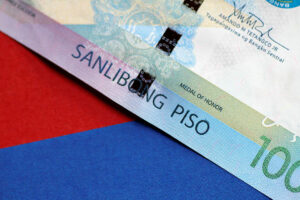
PHL on final steps to exit ‘gray list’ by 2025
By Luisa Maria Jacinta C. Jocson, Reporter
THE PHILIPPINES has made headway in its bid to exit the Financial Action Task Force’s (FATF) “gray list” by next year as it has “substantially completed” its remaining action items.
“Yes, I think we passed a very important step,” Bangko Sentral ng Pilipinas (BSP) Governor Eli M. Remolona, Jr. said in a text message.
This after the FATF kept the Philippines in its list of jurisdictions under increased monitoring for “dirty money” risks in its October plenary.
The Philippines has now been on the gray list for over three years or since June 2021.
However, the FATF said the country has addressed the remaining deficiencies in the recommended action items to improve its anti-money laundering and counter financing of terrorism (AML/CFT) regime.
“We’re very happy to report and for me to share with you that this week the plenary examined the progress of the Philippines and consider that the Philippines has indeed substantially completed this action plan,” FATF President Elisa de Anda Madrazo said at a press conference late on Friday.
The FATF will conduct an on-site visit to verify this progress, which is set to take place anytime between now and February 2025.
“An on-site visit means that a group of experts go into the country to verify the progress that it has made so that the FATF can decide whether to remove it from the gray list or not. We will expect an answer on this in February of 2025,” she added.
The on-site assessment will also “verify if the implementation of AML/CFT reforms has begun and is being sustained, and that the necessary political commitment remains in place to sustain implementation in the future,” the FATF said on its website.
The Anti-Money Laundering Council (AMLC) in a statement said the country is now “closer to exiting the anti-money laundering watchlists by 2025.”
This would pave the way for Filipinos, particularly overseas workers, to “benefit from faster and cheaper remittances and other transactions,” it added.
“Failure to address the remaining action plan items would have put the Philippines at risk of entering the blacklist,” the AMLC said.
“FATF member countries impose restrictions and additional checks, and possibly refusal of financial transactions with countries in the blacklist. This results in failed transactions, delays, and costs that may be passed on to the consumers,” it added.
AMLC said that the FATF’s Asia-Pacific Joint Group will visit the country early next year to “verify the sustainability of the AML/CTF reforms.”
“This is the final step toward the country’s removal from the gray list,” it added.
The FATF last week said the Philippines has implemented key reforms such as “demonstrating that risk-based supervision of Designated Non-Financial Businesses and Professions (DNFBPs) is occurring; demonstrating that supervisors are using AML/CFT controls to mitigate risks associated with casino junkets; implementing the new registration requirements for Money or Value Transfer Services (MVTS) and applying sanctions to unregistered and illegal remittance operators.”
In July, Malacañang issued an executive order mandating all government offices to adopt the National Anti-Money Laundering, Counter-Terrorism Financing, and Counter-Proliferation Financing Strategy 2023-2027.
The FATF also noted the country’s reforms focused on streamlining law enforcement agencies’ access to beneficial ownership information and increasing number of money laundering investigations and prosecutions.
FATF’s Ms. Madrazo said that the Philippines is an “example of the positive impact that this process can have in a country.”
“With billions of dollars flowing into the country annually and the sheer volume of cross-border transactions, the progress made by the Philippines will have a huge impact in the security of the international financial system,” she added
Meanwhile, analysts said the country is well on its way to exiting the gray list, but continued implementation of reforms is still needed.
“There is a good possibility to exit from the list if a clear warning and information dissemination of the need to be compliant to ‘entities with potential’ violations of FATF are done. Continuous monitoring of these entities must be done,” Antonio A. Ligon, a law and business professor at De La Salle University in Manila, said in a Viber message.
On the other hand, Chester B. Cabalza, founding president of International Security and Development Center, said that the on-site visit is still a “reaffirmation that the country is still risky for dirty money that needs to be cleansed.”
“Transparency in our financial records and strong coordination for line government agencies are needed to address this discrepancy,” he said. “The Philippines has to get out from the gray list to become more productive and return to a healthy financial environment in the region.”
Leonardo A. Lanzona, an economics professor at the Ateneo de Manila University, said it will be crucial to address poverty and corruption if it wishes to get to the bottom of dirty money risks.
“While the government is setting the institutional requirements in moving out of the gray list, the overriding condition that keeps the country in the list remains. This pertains to poverty which is not a direct requirement in the list but can indirectly influence the required factors in moving out of the list,” he said in an e-mail.
Mr. Lanzona said poverty contributes to informality and “breeds unregulated transactions and corrupt financial networks that are not allowed by FATF.”



